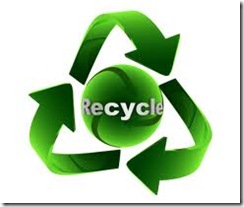It’s never too late to start recycling and reducing waste at home. Now is the perfect time to learn how to protect the environment as you care for your home. CertainTeed Corporation, a provider of earth-friendly building solutions offers the following tips to help homeowners cut back on waste in their homes while also helping to protect our planet.
- Let your fingers do the recycling: Phone books are distributed in most communities two times per year. You don’t want to throw them in the trash, but you don’t want them piling up in your closet. To find location near you to drop-off phone books (and most other materials) visit http://ww.Earth911.com. Recycled phone books are used in roofing materials, insulation materials. grocery bags and paper towels.
- Find out what trash your community accepts: Call your local recycling center to determine what types of materials they accept, if they do curbside pick-up, and if they provide recycling bins. This is important for everyday recycling, but can also be useful when undertaking home improvement projects involving materials you don’t regularly use.
- Hazardous products require special care: Paint cans and aerosol cans are recyclable but are considered hazardous waste and need to be separated from other metals. Leave labels on all cans so recyclers know what was in them and can determine how to properly dispose of them. Try to return lid along with empty paint cans. Visit http://www.Earth911.com to find out the rules for proper recycling of these materials in your area.
- Don’t throw away your batteries: Recycle worn-out rechargeable batteries like those used in cell phone, computers, or power tools. Go to www.rbrc.org to find a drop-off location near you.
- Almost anything can be recycled: Many people think they can only recycle cans, bottles or newspapers, but you can actually recycle most anything. This includes carpets, towels, rubber, building materials, cardboard boxes, plastic food containers and more. Before you toss something into the trash, think carefully about whether it could be recycled.
- Wall materials can contain recycled materials: What’s in your walls can also make an environmental impact. Today’s drywall, or gypsum, that makes up your actual walls can contain recycled materials. Find out what your contractor is putting in your home.
- Insulation keeps you warm and the earth green: The US Environmental Protection Agency (EPA) estimates a home owner can save up to 20 percent on heating and cooling costs by sealing and insulating around the home. Installing insulation in your attic is an easy, safe and effective way to make sure your home doesn’t lose heat in the winter, or cool air in the summer. Don’t forget to insulate exposed pipes and faucets in the outer walls, crawl spaces and garage.
- Make your siding work for you: Look for fiber cement siding that is made from recycled materials. Look for a content of 50 percent recycled materials.
- From roof to road: If you need to get a new roof, make sure that your contractor is properly disposing of the old shingles. Ask your contractor about programs to make sure your old materials won’t be sitting in a landfill.


